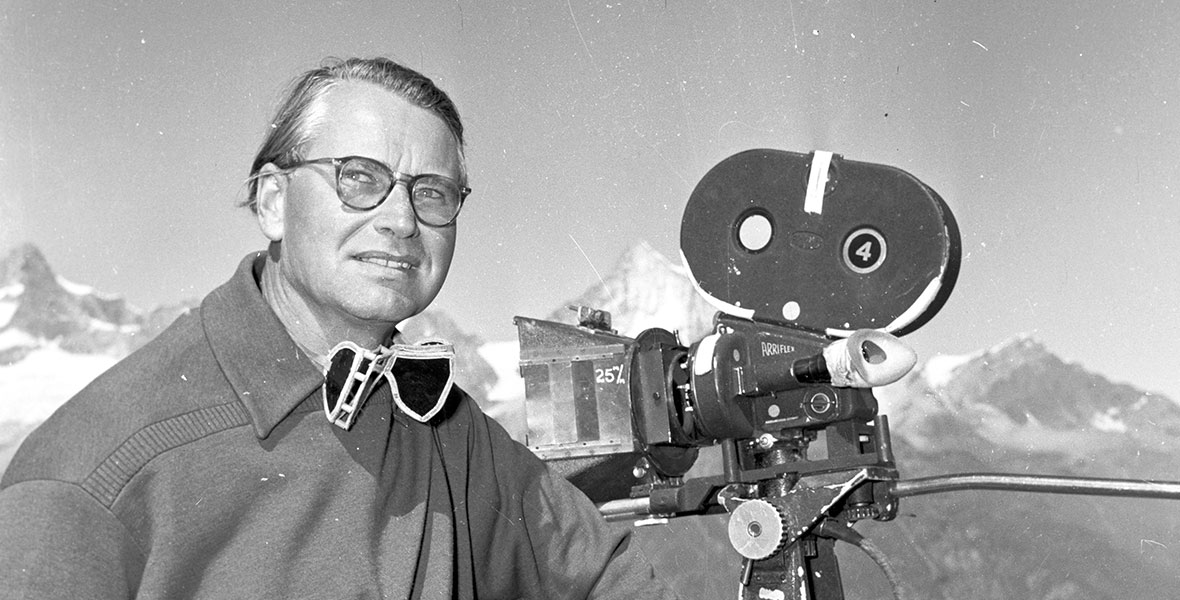Ken Annakin directed four motion pictures for Disney, including the live-action classic Swiss Family Robinson in 1960. A director of epic proportions, Ken lent his vision and precision to creating the $4 million film, which was considered one of Disney’s most lavish movies at the time.
Shot on location on the Caribbean island of Tobago over a 22-week period, the film featured a menagerie of exotic animals including elephants, ostriches, tigers, and more. In his 2001 autobiography So You Wanna Be a Director? Ken recalled Walt Disney suggesting a scene with a tiger. Ken hesitated, however, based on a previous experience directing a tiger and suggested a lion instead.
“Oh-ho,” Walt said. “At last we’ve found something Ken’s afraid of. If you’re scared to film the tiger, I’ll come out with a 16 millimeter camera and shoot it myself!”
The tiger stayed in the picture.
Born in Beverley, England, on August 10, 1914, Ken was a restless young man. At 22, he took off for Australia and New Zealand for three years. His adventurous nature carried through his professional career as well; he directed movies on location in Africa, India, Scandinavia, and China.
Ken began his career in England during World War II, working on army training and documentary films as a camera assistant at the Ministry of Information. In 1947, he made his directorial debut with the comedy Holiday Camp, followed by the popular Miranda, starring Glynis Johns, and the Somerset Maugham films Quartet in 1948 and Trio in 1950.
While at Pinewood Studios in England, he was approached by Disney producer Perce Pearce to direct The Story of Robin Hood and His Merrie Men in 1952, followed by The Sword and the Rose in 1953.
A year after the box office success of Swiss Family Robinson, Ken directed Disney’s Third Man on the Mountain on location in the Swiss Alps; the film featured impressive vertigo-inducing mountain climbing footage.
Disney proved a fruitful training ground for the young filmmaker, who later recalled, “Working with Walt was a great experience in learning discipline because when you worked with him, you were making his picture under his conditions. He was very organized; every picture was storyboarded before filming.”
Ken used storyboards, a production technique he learned from Disney, to visually develop subsequent big-scale pictures, including The Longest Day in 1962, Those Magnificent Men in Their Flying Machines in 1964, and The Battle of the Bulge in 1965.
In 1999, The Walt Disney Studios, in conjunction with the British Academy of Film and Television Arts, Los Angeles, hosted A Tribute to Ken Annakin, featuring excerpts from 12 of his 49 motion pictures.
Ken Annakin passed away on April 22, 2009, in Beverly Hills, California,—the same day as Jack Cardiff, who had been his cinematographer on the 1979 film The Fifth Musketeer.



